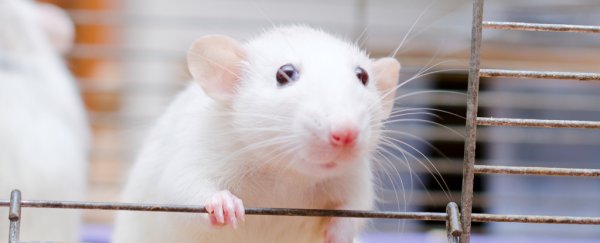New medicines come to our pharmacies through a rigorous process that begins in the lab and ends with multiple trials in humans. Along the way there can be animal studies, such as trials of type 2 diabetes drugs in mice.
While mice are not people, they do share plenty of biological similarities with us to be valuable trial subjects. But sometimes treatments that work in mice fail without an explanation in humans. And now scientists have finally cracked the case on why that happens.
Researchers from Lund University in Sweden and King's College London have found that mice and humans have previously unknown differences when it comes to having G protein-coupled receptors (GPCRs) on insulin-producing beta cells in the pancreas.
GPCRs are found on the surfaces of many cells, where they receive chemical messages via various molecules called G proteins. We have nearly 1,000 different GPCRs, each finely tuned to react to a particular molecular signal.
These receptors have a laundry list of jobs in the body, including detection of certain tastes and smells, immune system regulation, transmission of nerve signals and many more.
That's why pharmaceuticals can be used to target specific GPCRs. This avenue of delivering drugs is so popular, it is estimated that around 40 percent of all modern prescription meds target this receptor type.
But when it comes to developing GPCR-targeted drugs for type 2 diabetes, we've had little success. And that could well be because the receptors in mouse and human beta cells just don't match up.
Scientists already knew that might be the case, but now they have clearly outlined some of these differences, and also found some promising similarities.
Cells in the pancreas hang out in little clusters known as islets. The team compared islets from two types of laboratory mice, and from non-diabetic human organ donors.
They found that humans don't actually have some of the GPCRs that we target in mouse islets in order to help with insulin production. Meanwhile other receptors are only found in humans, but not in mice.
"This means that a drug developed to stimulate or inhibit a particular receptor which, in mice, can lead to increased insulin production, might have no effect on humans, or even could cause unbeneficial and diabetes-like symptoms," says one of the team, Stefan Amisten from King's College London.
And that's not even all. The researchers even found receptor differences between the two types of lab mice they used.
"This is well known, and a source of great frustration for researchers and the pharmaceutical industry," says Lund University's Albert Salehi.
"Is it then right to continue to develop drugs based on research conducted on mice, when these drugs cannot be used on humans?"
That's an important question, and it's exactly the reason why this comparison study will be useful for other scientists who are hunting for new diabetes drugs and thinking of testing them in mice first.
"Overall, the data presented here provide an essential resource for the translation of mouse islet functional data to the human islet context," the researchers write in the study.
Thankfully, the researchers also mapped a bunch of GPCRs which are similar in both mice and humans, so there's scope for research there. And now that scientists have a better roadmap of all these differences and similarities, drug testing will hopefully be more precise in the future.
The study was recently published in Scientific Reports.
